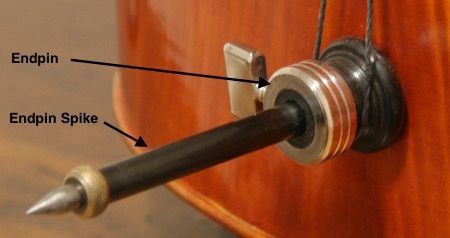Over the past 25 years I have tried a number of different endpin and endpin spikes while making cellos. Mostly carbon fibre and steel spikes. We also see clients using a range of different endpins on their cellos. Most of these are made in Germany, Japan and the US.
In the workshop we have a range of endpin spikes from different materials, including:
~ Carbon fibre solid rod or a hollow carbon fibre tube
~ Hollow aluminum tube
~ Solid steel rod
~ Titanium hollow tube and solid Titanium rod
~ Composite rods of brass, titanium and tungsten and a further variation of a composite rod of brass, titanium, tungsten and carbon fibre!
They are all standard 10mm diameter and will fit most standard endpins.
The cello endpin spike serves the obvious function to support the cello while the cellist plays. But the type of material these long spikes are made from also effects the sound of the cello. It forms a contact between the cello and the floor and absorbs some vibrations from the cello itself. Some endpins spikes are quite flexible and others are very strong and stiff. The lightest weighs in at 57 grams. While the heaviest can weigh seven times more, at nearly 400 grams. (nearly a pound!)
Trying a different endpin spike requires a certain amount of trial and error but is one of the easiest adjustments for cello. You simply change the endpin to a new type and if you like the sound change – great! If not, you can just put your original endpin spike back. No harm done.
If you’re a cellist and would like to try some of these endpin spikes in our workshop, you are welcome to visit!

